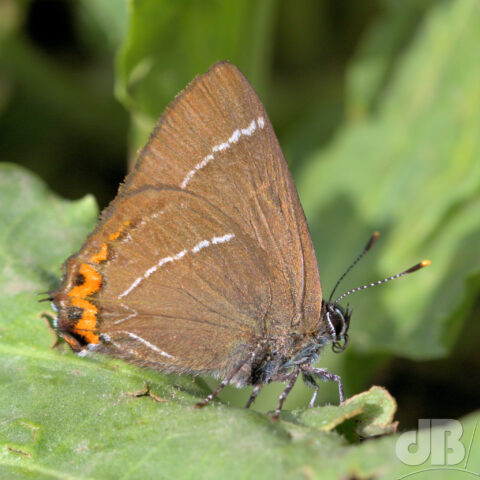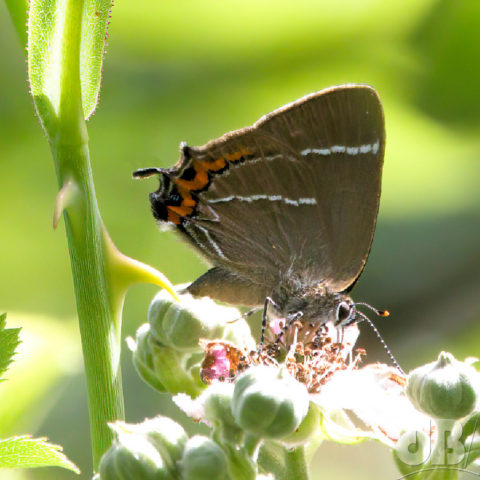I spotted a White-letter Hairstreak in our local woodland (Manor Farm Wood, Rampton) in the middle of June 2022. Having only previously seen it at Overhall Grove flying at the tops of elms, I was a little surprised to see this species, of which I eventually counted 15 in the space of an hour or so (21 a couple of days later).

It’s a “hairstreak” butterfly, note the white streaks on the underside of its wings, but also note that towards the termen of the wings the white streaks form what might whimsically be perceived as a “W” or an “M” depending on your reading angle. Hence the scientific name: Satyrium w-album.

The adults nectar on bramble flowers but its larval foodplant is the elm. Obviously, since the 1920s, elms have commonly succumbed to Dutch Elm disease and so the WL-HS has not been as widespread nor as common as it perhaps once was when elms were everywhere. It’s making a bit of a comeback and not so localise nor non-colonial as its cousin the Black Hairstreak. From a quick scan of the records for S. w-album on iRecord it looks like they are seen in some disparate places across Cambridgeshire, but I think my Rampton record if the first noted on that site.
I saw my first WL-HS in Overhall Grove in 2021 but only encountered the B-HS for the first time at Monk’s Wood and then Brampton Park. The B-HS inhabits old woodland with well-established blackthorn bushes growing in particularly peaty earth. In the whole of the UK there is only a narrow strip of such habitat that stretches from north of Cambridge South-west to Oxford, and one or two other spots. Monk’s Wood and Brampton Wood are at the North-eastern end of this strip of land. There are perhaps hundreds if not thousands of B-HS at Brampton which has an abundance of blackthorn. These two woodlands are the oldest in the county of Cambridgeshire.